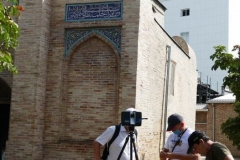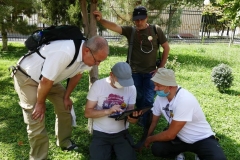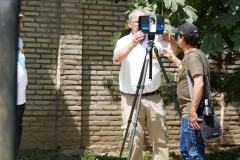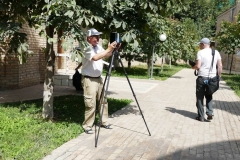Mausoleum Shayk Kovand Tahur
Sheikh Hovendi at-Tahur was born in the 13th century. He was Seyd, which means that he belonged to the tribe of Quraysh (Quraysh), the native tribe of the Prophet Muhammad. His father, Sheikh Omar, was a direct descendant in the seventeenth generation of the second pious caliph Omar ibn al-Khattab, so the men in the family of Sheikh Omar bore the honorary title of Khoja. Sheikh Omar was an initiated Sufi, a follower of the dervish Hasan Bulgari. He arrived in Tashkent with the sole purpose of spreading Islam. Sheikh Omar soon moved to the mountain village of Bogiston[1], where he spent the rest of his life. Sheikh Hovendi at-Takhur (Sheikhantaur) was born here. The young at-Takhur, striving to perfectly understand not only religious canons, but also secular sciences, was struck by the statement of the Turkestan Hazrat Khoja Ahmed Yasawi, who lived in the 12th century: “High spiritual qualities and knowledge in the sciences are consistent with the patience and meekness of a Sufi in relation to rudeness ignorant.” Probably, this was the reason why the young at-Takhur decided to comprehend the mystical philosophy of Yasawi, and not to become a follower of Bulgari, like his father. Sheikhantaur took initiation among the dervishes of the city of Yassy, where the veneration of the Sufi Sheikh and the founder of the order, Khoja Ahmed Yasawi, was already widespread at that time.
As befits Sufi dervishes, at-Tahur does not settle in one place, but wanders around the cities of Maverannahr. In all the cities he visited, the Sheikh earned respect for his educational activities, caring for orphans and widows. Wherever he was, he impressed his contemporaries with his knowledge and wisdom. Being one of the founders of the Naqshbandi Sufi order, Sheikh at-Takhur in his teachings urged people to be patient and meek, kind and loving. The rumor about him, as a gifted and wise person, spreads instantly, and among the people they call him “the wisest of the wisest.”
After a long period of travel around Maverannahr, Sheikhantaur arrived in Tashkent, where he remained in people’s memory as “the wisest of the wisest.” The sheikh died in 1355. In the second half of the 14th century, the commander Tamerlane, who was treating his wounded leg in Tashkent with the help of the healing water of the Zem-Zem spring, built a mausoleum for the Tashkent Sheikh at-Takhur. The only petrified “Iskander saur” that has survived to this day is located inside the mausoleum.
Digitalization of the object by employees of the Lublin University of Technology
Panorama of the object
360 images for VR glasses
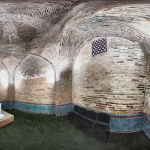
Instruction to run VR panoramas in the mobile application

